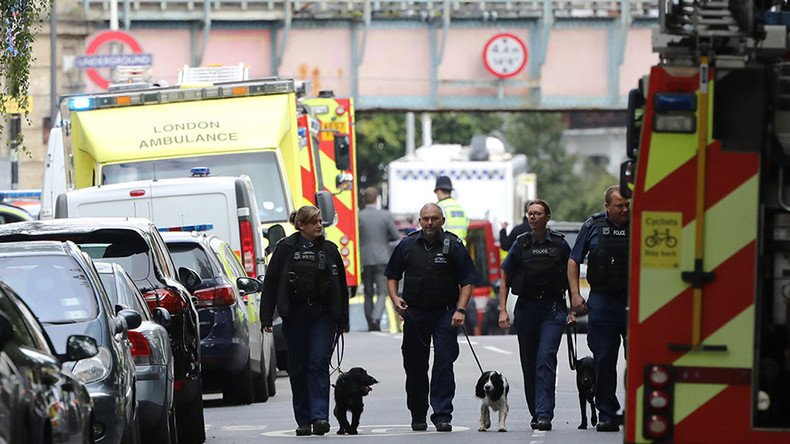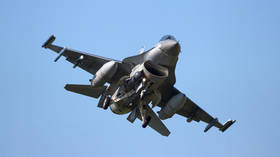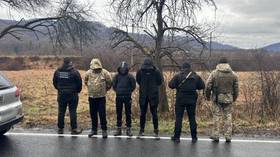'Failed detonation in London Tube attack could provide valuable forensics'

We were watching video footage of it, and it’s kind of bizarre. You have a mayonnaise bucket there, which is just burning away, Patrick Henningsen, executive editor of 21st CenturyWire.com, told RT. other experts join the discussion.
In London, 22 people were reported injured during the Friday morning rush hour in what authorities are calling a terror attack at Parsons Green underground station.
Metropolitan Police said an improvised explosive device [IED] went off in an underground carriage. They also said the IED did not fully detonate.
'Everyone just standing around, taking photos'
READ MORE: London police confirm Parsons Green explosion was terrorist attack, several injured
Patrick Henningsen, executive editor of 21st CenturyWire.com, told RT that “this looks like almost like the rerun of the July 21, 2005 ‘chapati flour bomb."
“I think it was a backpack bomb that failed to detonate and kind of smoked its way out, but that was right in the aftermath of the 7/7 incident only a few weeks before in roughly the same area as well: Shepherd's Bush and Parson Green are very close together – underground stations in the same sort of part of West London. To call this an IED (improvised explosive device) is almost generous. We were watching video footage of it, and it’s kind of bizarre. You have a mayonnaise bucket there, which is just burning away. Everyone is just standing around taking pictures of it and getting snaps for social media, and casually chatting about it… as far as a terrorist device, it's not very effective.”
'Reminiscent of 7/7'
Chris Hunter, former UK Army intelligence officer terrorism expert, also said that the device used in the terrorist attack “is very similar to the containers that were used during 21/7 and 7/7 suicide attacks.”
It is slightly concerning that so many of these attackers in the UK this year have already turned out to be on the radar of the intelligence services. So something, somewhere is not quite meshing. They seem to be falling through the cracks because there is too much intelligence coming in, because of mass surveillance or just because there is not good communication between the police and the intelligence agencies which has been known to occur in the past. - Annie Machon, former MI5 intelligence officer
"It was a high explosive, if it was I think it is. On the July 7 (2005) suicide attacks everything detonated, it was a very powerful high explosive event. On July 21 (2005), two weeks later, the detonator detonated but the main explosive charge didn’t. [J]ihadist Islamist extremists use this, and use it all over the world in countries where they can’t get quality military high explosives and quality military detonators. And they don’t want to use low explosives because they are not powerful enough. What we saw, July 7, it worked, July 21 it failed. This particular incident it looked exactly like a failed high explosives improvised device that was used, for example, on July 7," Hunter told RT.
'We may get some forensics'
Roger Gray, former firearms officer at MET police, commented on the Parsons Green attack: “The fact that this is what is termed a ‘partial’ is in some respects a blessing because it means that large areas or dimensions of this device will be still be intact and that will give the authorities an opportunity to look at this forensically and to see where the components came from, they may even get things as obscure as fingerprints that may not have been burnt off. They might even get DNA whereas if it had totally detonated, not only would we be looking at the loss of life, but we would be looking at the loss of evidence. Let’s hope that it will help to lead back to the instigators of this dreadful event.”
'Perhaps not Islamists'
Dr. Lewis Herrington, terrorism expert, told RT: "They [the government of Prime Minister Theresa May] didn’t raise the threat level to critical and perhaps that is because this wasn't an Islamist attack. The presence of a timing device is very different to all the other attacks we’ve seen: jihadists die in the process, it is part of the process. If this was an individual Salafi jihadist, then either he is planning to flee to Syria, or planned another series of attacks. It is clearly different to what we’ve seen in Manchester, what we’ve seen on the Westminster attack, what we’ve seen in the London Bridge attack. This was not somebody that was prepared to die in the process.”
The statements, views and opinions expressed in this column are solely those of the author and do not necessarily represent those of RT.












